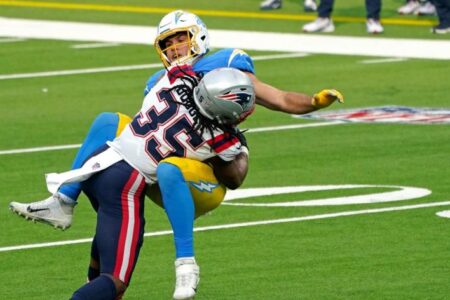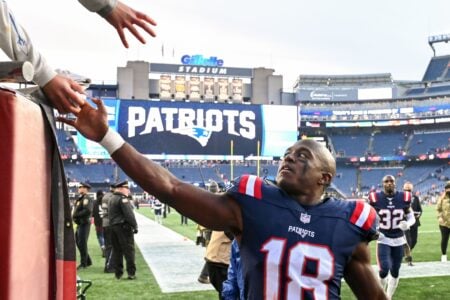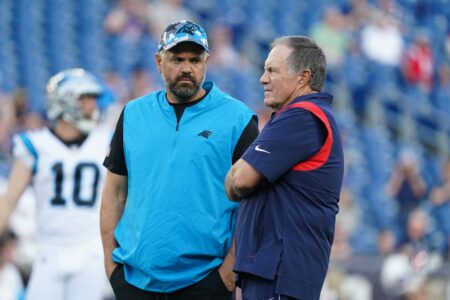The doomster, sky-is-falling types, just can't get enough Gloom & Doom.
It has finally penetrated their thick skulls that Seymour leaving, created a big hole that affected the Patriots Defense in 2009. I have been saying that to the winds, seemingly forever. Meanwhile all I have heard is endless drivel about "lack of pass rush" and lousy OLBs,and only 31 sacks.
The reality is you can't accumulate sacks on 3rd and 2s. Despite the constant wailing, the OLBs positions produced 18 sacks. That is above the standard quota, and actually higher than some of the SB clubs. But the DL line fell off from about 10-12 to only 5. The ILBs blitzed for exactly none, when they usually produced about 5, as well. What secondary blitz sacks? What interior pressure? How do you stop the step-up, into the pocket? They didn't in 2009.
Y'all won't like the Truth but the OLB "problem" was solved with the acquistion of Derrick Burgess and a TC, and the return of TBC. BB spent the entire offseason not getting OLB FAs, but trying to solve the Seymour hole. Damione Lewis and Gerard Warren are products of that search.
And why was there a hole? It wasn't because the talent wasn't there when he left. It was that Belichick planned to replace Seymour with a pair of RDEs, and platoon the under-sized Wright and Greene, to keep them fresh. And then Greene got dinged, and Wright got worn out and over-whelmed.
Yes it hurts that Ty Warren went on IR, but there is a solution. Now there is someone to spell Wright at RDE; and there is someone to take T Warrens place. And neither is a slouch. Either GWarren and DLewis are more than adequate to platoon, with Wright. The other is more than adequate to platoon with Pryor and/or Brace at LDE. It is even possible that one or both don't need the assistance of a platoon mate.
Actually Wright, Pryor, Lewis, and Warren are all capable of penetrating and re-creating the missing interior pressure. T Warren was never a sacker nor is Wilfork. Virtually all the interior rush and sacks came from Seymour. Now it willl be distributed, and harder to plan and anticipate. Wright will get his half dozen sacks, and the others should be able to generate another half dozen or more.
The mediocre hole at the defensive line has been repaired, maybe not as well as hoped, but better than it was last season. When it was so "horrible", the Pats could only win 10 games.
It is also why I rated the OLB corp as an A- that caused so much frivolity, amongst the doomsters.
If Green and Wright were platooning, who was the ideal fit on running downs? The Pats' biggest problem, as you alluded to, was that they weren't very good on first and second down, leading to a lot of third-and-shorts. This was largely because teams could reliably run for enough to get into third and short when needed. Good teams could, at least. And that was at least in part because, between Wright and Green, neither one can be trusted to hold up against an effective run-blocking line. We saw Wright get absolutely crushed on Reggie Bush's touchdown run last week, and I think we'll be seeing more of that if we expect to see much of him before third down.
As far as OLBs are concerned, I'm right there with you. I don't think that they're the problem on defense. The problem is talent decay on the d-line and at ILB, which culminated last year with Bruschi's retirement, Mayo's injury, Guyton being thrust into a role that forced Mayo out of position, Seymour's trade, and Warren's persistent groin and hip injuries. We clearly lacked talent at DE and ILB, and it killed us on second down, in particular. Here's the stats to back it up:
Before Ty Warren was IRed, I thought that a Warren-Wilfork-Warren line, with Mayo (healthy and in position) and Spikes behind them would turn that weakness into a strength. Gerard Warren was a bit of a wild card, but even if he couldn't get the job done, there were other candidates.
With Ty Warren out, though, I'm a lot more uncertain. Even assuming best case scenario for Gerard, who steps in at the other side? I'm not a Mike Wright fan, for the reasons mentioned above. Brace has had health issues, but I'm at least intrigued by him. Damione Lewis didn't start in the NFL until he was 30, and hasn't shown anything up to this point to indicate that he should have. I like Deaderick, but if his weight's really in the 280s, but he seems to be a little small to ask him to be on the field before third down. And Pryor, at 6'1, isn't very well suited for gap control. At this point, I'm just really hoping that Brace turns out to be a revelation. We know he's slow, but if he can occupy blockers without giving ground, then he'll be exactly what we need. In that case, on passing downs they'll both probably sit, and I wouldn't be surprised if we went with a 4-2-5 nickel package.
Even if RDE is better off now than it was in 2009, in 2009 it was a gaping chasm. We haven't replaced Seymour, and frankly we're not going to. He's a once-in-a-generation type player, and rather than worrying about replacing him the Pats just have to figure out how they're going to make up for his loss elsewhere. Replacing Guyton with Spikes is an excellent start. And FWIW, I do agree with you that the defense will be better than last year. I think it'll be above average this season, as opposed to average. And I do think that that's good enough to put the Pats in the conversation as a preseason SB contender, so I'm definitely not a doom and gloom type.




















